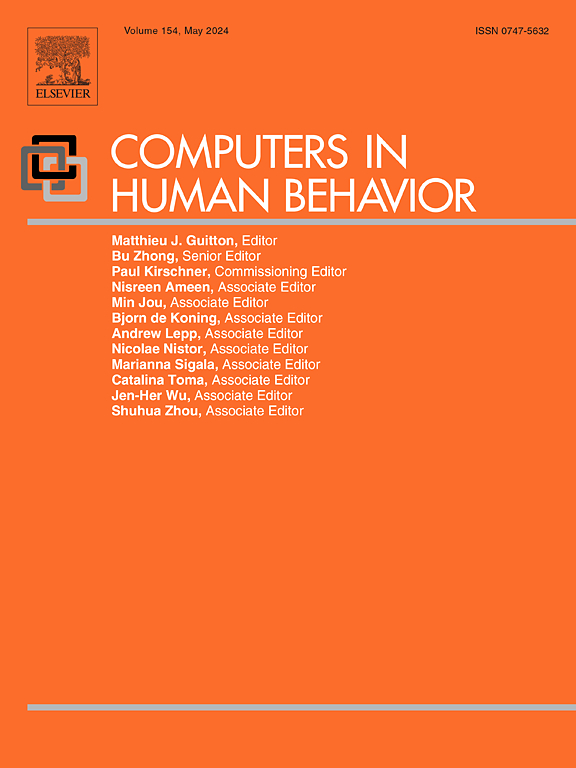Longitudinal relationship between gaming disorder symptoms, hyperactivity/inattention symptoms and aggression among Chinese adolescents: Within-person and between-person effects
IF 9
1区 心理学
Q1 PSYCHOLOGY, EXPERIMENTAL
引用次数: 0
Abstract
Gaming disorder is a global issue that impacts adolescents’ social development. Aggression and hyperactivity/inattention symptoms have been suggested as core risk factors and adverse consequences for gaming disorder symptoms. However, longitudinal studies on the directionality of these relationships are scarce, and most do not distinguish within-person and between-person effects. To address this gap, a one-year longitudinal study was performed using data collected in three waves from 1296 Chinese adolescents (Mage = 13.73 ± 1.49, aged 11–17 years, 50.85% girls). We applied random intercept and traditional cross-lagged panel models to examine the within-person and between-person effects. At the within-person level, findings suggested a unidirectional relationship that gaming disorder symptoms increased the symptoms of hyperactivity/inattention and aggression, but not vice versa. The between-person results showed significant relationships between these variables, and that hyperactivity/inattention symptoms were a mediating mechanism for the longitudinal relationship between gaming disorder symptoms and aggression. These findings deepen the directional understanding of the relationships between them, and emphasize the critical role of gaming disorder symptoms in the development of hyperactivity/inattention symptoms and aggression among adolescents.
中国青少年游戏障碍症状、多动/注意力不集中症状与攻击行为的纵向关系:人内和人间效应
游戏障碍是影响青少年社会发展的全球性问题。攻击和多动/注意力不集中症状被认为是游戏障碍症状的核心危险因素和不良后果。然而,关于这些关系的方向性的纵向研究很少,而且大多数都没有区分人与人之间的影响。为了弥补这一差距,我们对1296名中国青少年(年龄11-17岁,50.85%为女孩)分三波进行了为期一年的纵向研究(年龄= 13.73±1.49)。我们采用随机截距和传统的交叉滞后面板模型来检验人与人之间和人与人之间的影响。在个人层面上,研究结果表明,游戏障碍症状增加了多动/注意力不集中和攻击的症状,但反之亦然。结果表明,多动/注意力不集中症状是游戏障碍症状与攻击行为纵向关系的中介机制。这些发现加深了对两者之间关系的方向性认识,并强调了游戏障碍症状在青少年多动/注意力不集中症状和攻击行为发展中的关键作用。
本文章由计算机程序翻译,如有差异,请以英文原文为准。
求助全文
约1分钟内获得全文
求助全文
来源期刊

Computers in Human Behavior
Multiple-
CiteScore
19.10
自引率
4.00%
发文量
381
审稿时长
40 days
期刊介绍:
Computers in Human Behavior is a scholarly journal that explores the psychological aspects of computer use. It covers original theoretical works, research reports, literature reviews, and software and book reviews. The journal examines both the use of computers in psychology, psychiatry, and related fields, and the psychological impact of computer use on individuals, groups, and society. Articles discuss topics such as professional practice, training, research, human development, learning, cognition, personality, and social interactions. It focuses on human interactions with computers, considering the computer as a medium through which human behaviors are shaped and expressed. Professionals interested in the psychological aspects of computer use will find this journal valuable, even with limited knowledge of computers.
 求助内容:
求助内容: 应助结果提醒方式:
应助结果提醒方式:


